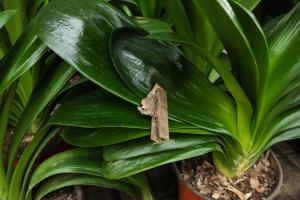Why is My Pothos Plant Turning Yellow?
Pothos plants are a popular choice for indoor gardening due to their low maintenance and aesthetic value. However, if you're noticing that your pothos plant is turning yellow, it may be an indication of an underlying issue. In this article, we'll explore some of the reasons your pothos plant may be turning yellow and how you can fix it.
Lack of Water
One of the most common reasons for yellowing pothos leaves is a lack of water. Pothos plants prefer to be kept moderately moist but not soaking wet. If the soil is dry to the touch, it's time to water your plant. Be sure to use a pot with proper drainage and avoid letting the plant sit in standing water as this can lead to root rot.
Overwatering
On the other hand, overwatering can also cause yellowing leaves in pothos plants. If the soil is consistently wet, it can lead to root rot and other issues. Make sure to let the soil dry out slightly before watering your pothos plant again. If the roots have already been affected by overwatering, you may need to repot the plant in fresh, well-draining soil.
Pests
Another reason for yellowing pothos leaves can be due to pests such as spider mites or mealybugs. These pests can suck the sap out of the leaves, causing them to turn yellow or brown. You can use a gentle insecticidal soap to get rid of these pests, or try using neem oil as a natural alternative. Be sure to check your plant regularly for signs of pests and take action immediately if you notice any.
Lack of Sunlight
Pothos plants require bright, indirect sunlight to thrive. If your plant is turning yellow, it could be an indication that it's not receiving enough sunlight. Make sure to place your pothos plant in a location where it can receive at least 6 hours of bright, indirect sunlight each day. If you don't have a location with enough natural light, consider using artificial grow lights to supplement your plant's light needs.
Nutrient Deficiencies
Finally, a lack of nutrients can also contribute to yellowing pothos leaves. Pothos plants require a balanced fertilizer to thrive, with a focus on nitrogen, phosphorus, and potassium. If you've noticed that your pothos plant is turning yellow, try feeding it a balanced fertilizer every few weeks. Be sure to follow the instructions on the fertilizer package and avoid over-fertilizing your plant.
Conclusion
In summary, yellowing pothos leaves can be an indication of several issues, including lack of water, overwatering, pests, lack of sunlight, and nutrient deficiencies. By identifying the root cause of the problem, you can take steps to fix it and keep your pothos plant healthy and thriving. Remember to check your plant regularly for signs of issues and take action immediately if you notice anything unusual. With proper care and attention, your pothos plant can provide you with years of enjoyment and beauty.

 how many times do yo...
how many times do yo... how many planted tre...
how many planted tre... how many pine trees ...
how many pine trees ... how many pecan trees...
how many pecan trees... how many plants comp...
how many plants comp... how many plants can ...
how many plants can ... how many plants and ...
how many plants and ... how many pepper plan...
how many pepper plan...































